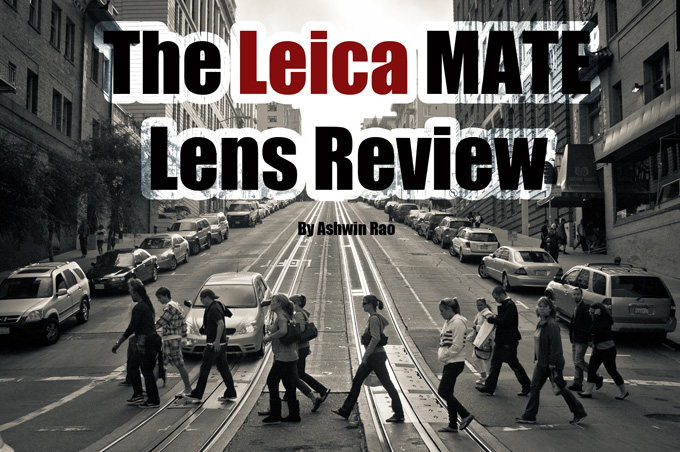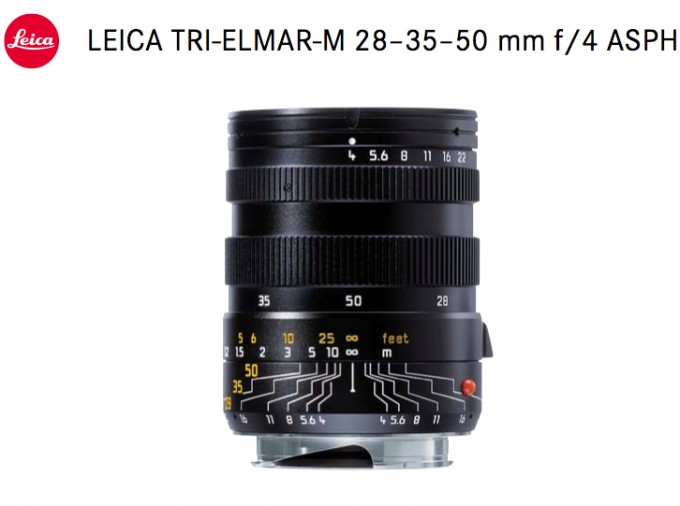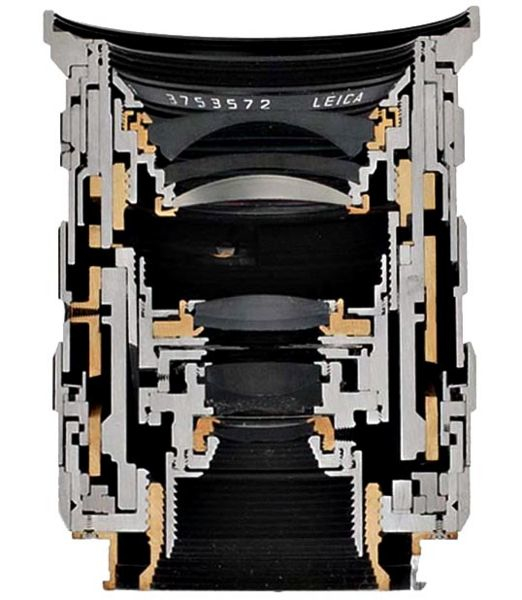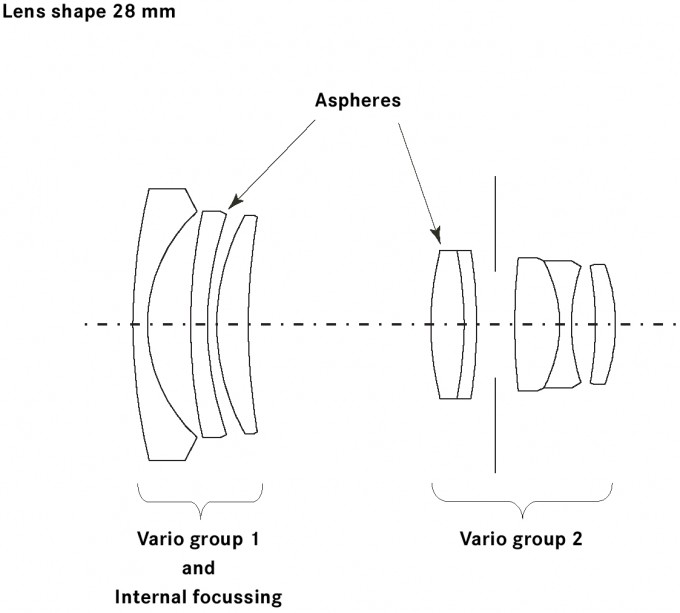The Leica Tri Elmar 28-35-50 f/4 Aspherical (MATE) Lens Review
By Ashwin Rao
Hello, everyone. It’s Ashwin, here with a review for you all of one of the true engineering gems in Leica’s lens lineup, the Leica Tri-Elmar 28-35-50 mm f/4 aspherical lens, affectionately known as the MATE. In case you are wondering, “MATE” stands for “Medium Angle Tri Elmar”, in comparison to Leica’s 16-18-21 Wide Angle Tri Elmar, which is known as the WATE, which Steve favorably reviewed HERE.
History of the MATE
The MATE was produced for just 9 years, from 1998 through 2007, which is quite a short period as far as M-lenses are concerned. It was produced in 3 versions. The first version of the MATE utilized a E55 filter thread, while the later 2 versions were produced with a E49 filter thread. Over the course of its lifetime and through its 3 iterations, the optical formula of the lens remained unchanged, but cosmetics, lens barrel coatings, and functionality were improved. Some have suggested that there were other changes made to reduce the amount that this lens tended to flare at its 50 mm focal length setting, which is an issue frequently encountered in the first version (E55) of this lens.
During its production run, the MATE was considered a “statement” of Leica’s engineering prowess. A simple look at the cross section of this lens suggests its complexity of design and manufacture. Combined with the expensive cost of some of its optical elements, its complicated design and manufacturing time likely lead to its halted production.
There are a lot of anecdotal reports and quotes from Leica representatives and the forums as to why this very useful lens ended its run rather suddenly. The general consensus is that the front element, which was manufactured by Hoya, became either too rare or prohibitively expensive to justify continued production of this lens, and at last inquiry, Leica has no plans to commence production of this lens in the future.
Thus, the Leica MATE remains a heritage lens, but one with its inherent benefits, if you can get a hold of one.
My attention was drawn to the MATE about a year ago, when the Leica M9 was released. In the film days, where everything was “full frame” (i.e. 35 mm film), the MATE was seen as a great performer with a useful focal length range of 28-50 mm, making it Leica’s version of a normal zoom lens. However, with the introduction of the M8 and its 1.3x crop sensor, the MATE’s focal length range became a bit funky (36-65 mm) , and it seemed to fall out of favor with many photographers. With the return of full frame in the Leica M9, the MATE regained its native focal lengths, and in essence, its intended use.
The Technical Details
The Leica MATE is an elegant design that includes 2 aspherical elements and 2 lens groups which move in position with respect to one another to permit its 3 focal length settings. Many have questions as to whether the MATE’s design is a true continuous zoom. Erwin Puts has stated that the MATE is in fact a true optical zoom lens. However, there are some complications in defining this lens as a zoom lens in the traditional sense. First, The lens moves in focal length from 28 mm to 50 mm, and then to 35 mm focal lengths. One can imagine that such as design would make it hard to predict what focal length the lens is actually zoomed to when between these stepped detents. Further, given that Leica only has optical frame lines for 28, 35, and 50 mm settings, the focal lengths between these settings are not easily interpretable. Thus, while the MATE may mechanically represent a zoom lens, in function, it is only useful to think of this lens as a step zoom design. To boil it down simply, it really only can be used at 3 focal lengths, 28 mm, 35 mm, and 50 mm.
The MATE is composed of 8 elements, organized into 6 groups. It can focus down to 1 meter at each of its focal lengths. Maximal aperture is f/4, while the lens can be stopped down to f/22. It’s f/4 maximum aperture lens the MATE to primarily daytime use, given current limitations in ISO reach for both film and digital cameras (M9’s max ISO is 2,500, and B&W film typically tops out at ISO 3200). At 340 g (12 oz) and 67.8 mm length, it is realitively long for a Leica design, but relatively light for its size. Once you factor in that this really is 3 focal lengths in one design, it becomes far more attractive as a travel lens option. It was made available, especially in later iterations, in both black and chrome versions, though Black versions were produced in larger numbers.
For those of you tech spec nuts out here, here are some technical details for this lens (available on the Leica Wiki site)
Leica Order No. – 11 890 (1st) – 11 625 (2nd + 3rd) – 11 894-chrom / LLC – 132
Production era 1998-2007
Variants – E55 1st version; Body change 2nd version E49-A53, “Improved Mount Redesign” E49-A53 3rd version after Serial No. 3507451 – Black and Chrome versions (black lens shown on left is the E49-A53 version)
Lens mount – Leica M-bayonet
Number of lenses/groups – 8 /6
Focusing range – 1 m / 3.3 ft < ∞
Aperture range – f/4-f/22
Smallest object field – 28 mm focal length: 750 x 1130 mm, 35 mm focal length: 620 x 930 mm, 50 mm focal length: 430 x 650 mm
Reproduction ratio – 28: 1:31 – 35: 1:26 – 50: 1:18
Angle of view (diagonal/horizontal/vertical) – 28 mm: 75° / 65° / 46° – 35 mm: 63° / 54° / 38° – 50 mm: 47° / 40° / 27°
Position of entrance pupil –
Scales – Combined meter/feet graduation
Filter mount – E55 (1st) – E49-A53 (2nd)
Accessories – Hood: 1st 12458 2nd or (Redesign – 3rd) version 12450
Viewfinder – 12011
Materials – Anodized aluminum and optical glass
Length to bayonet flange 67.8 mm / 2.7 in
Largest diameter 55 mm / 2.2 in
Weight – 340 g / 12 oz
My thoughts and “review’
The Leica 28-35-50 mm f/4 asph is a brilliant lens. Other than its wide angle cousin, the WATE, there are no other lenses manufactured by Leica that function as step zooms. One might wonder whether the MATE can hold its own, in terms of optical performance, against Leica’s wonderful prime lenses. If one is coming from the world of SLR’s, he or she would know that Canon and Nikon prime lenses optically outshine their zoom counterparts quite dramatically (well, that’s my opinion at least), so what about the MATE? Well, I am here to say that the Tri-Elmar really competes optically with its Leica prime lens counterparts. It presents a sharply rendered image, with pleasing out-of focus elements, when shot wide open. It stops down well and seems to hit its stride optically at f/5.6 to f/8 during my time with it.
In terms of “look”, I’d place this lens as a “bridging” lens, with a “look” that possesses elements of both Leica’ Mandler-era design and some of its modern aspherical optics. There is a certain smoothness, demonstrated by many classic lenses, that can be seen in images captured with MATE, but microcontrast is maintained. In fact, I have been very impressed by how much detail the MATE captures. Fine details are resolved, but the lens continues to paint with a broader brush. Contrast is medium to high, consistent with its utilization of aspherical optical elements. Color reproduction is quite accurate, though not to the level of Leica’s APO lens designs. Overall, I very much enjoy the look of the MATE, and hope that the images that I share with you are representative of this lens’ output.
In practice, I have come across a couple of issues with the MATE that are worth mentioning. Due to its complicated design, switching focal lengths involves a complex set of movements of the lens elements within the lens. In practice, I have noted that switching between focal lengths occasionally causes errors in frame-line placement. With a bit of gentle fiddling of the focus length barrel, frame lines do snap into place, but in the interest of full disclosure, this behavior appears to one of the MATE’s eccentricities. Second, in conditions where a bright light source is positioned at the edge of the image, the lens can flare. This behavior only seems to be demonstrated, on occasion, at the 50 mm focal length. I have heard that this tendency to flare was corrected in later versions of the lens (I have the first version), via using flare-reducing paints within the lens’ internal barrel.
In use, the MATE is both limiting and liberating. For those of you who are in love with shooting “wide open” and getting dramatic foreground/background separation, the MATE simply is not the tool for the trade, as it is limited by its maximal f/4 aperture. For those of you used to getting close to your subjects with lenses such as the 50 mm f/1.4 Summilux or 35 mm f/2 Summicron (with minimal focus distances of 0.7 meters), the MATE gets you as close as 1 meter from your subject, so your framing of subjects can’t be quite as tight as with many of Leica’s prime lens offerings. The lens is somewhat large for a Leica lens, which might make some purists, who value small lens-size, squirm in discomfort.
Conversely, the MATE can be quite a liberating lens to use. The first, and obvious benefit, is having one lens with 3 utilizable focal lengths. In practice, not having to constantly switch lenses to utilize a particular focal length can be a blessing. This is why Canon and Nikon have been so successful in marketing and selling their zoom lenses, despite reduction in optical performance in those zoom options. Particularly, when traveling, having a one lens, 3-focal-length option, particularly with a focal length range as useful as 28-50 mm, can be a true blessing. Second, when traveling in dusty places and crowded space, keeping the lens attached to the camera will be enough to save your sensor from substantial dust contamination. Third, while some may find the f/4 aperture as a limitation, others might feel that limiting your aperture options to f/4 can promote creativity and increase thehit rate for in-focus captures. The MATE can become more of a “storytelling lens” by producing less background blur, forcing the photographer to consider background elements in his or her compositions. Many photographers suggest that the true test of a skilled photographer is to candidly and successfully frame the photographed subject in its background; in essence, to tell a story in this manner. I’ll leave further debates on this topic to you, but the fact of the matter is that the MATE’s f/4 aperture is absolute.
In my mind, the most important convenience of the MATE comes during travel. In today’s era of minimizing space and traveling compactly, optimizing your equipment choices becomes very important. I have commented before that I believe that the Leica M9 is an outstanding camera to travel with, and part of this is its compact size and form factor. Pairing the MATE with your Leica M proves quite a versatile travel option. One can conceivably use the MATE as a 1 lens-travel solution. Many photographers favor its 3 focal lengths (28, 35, and 50 mm) for 90% of their photographs, and thus the MATE covers the range well. Personally, I’d pair the MATE with a wider aperture prime lnes for low light shooting and a longer lens (such as the wonderful 90 mm elmarit, reviewed by Steve here) for telephoto work. But that’s me.
The Leica Tri-Elmar 28-35-50 mm f/4 stands as a pinnacle of Leica lens engineering and design. It is both optically and mechanically remarkable. It has its limitations, but if you are willing to work within its limitations, it may provide you with a wonderful and versatile option for daytime photography while on the run, or when size and capacity matters. It’s a one-lens option for both travel or circumstances where minimizing kit-size matters.
One final counter point: availability. Given its 9-year product cycle, not many MATE lenses were manufactured. It utilized lens elements that were relatively hard to manufacture, and its mechanical design made it challenging to manufacture. As a result, these lenses were quite costly to manufacture during their product run, and they remain quite expensive even now in the used market. People who buy these lenses tend to hang onto them, and thus, MATE lenses are often hard to come by on the used market. As of this writing, used Tri-Elmars range in price from $2,500-$4000, depending on version, optical condition, and cosmetics.
The Future?
Leica appears to have abandoned its MATE enterprise for the time being. The Wide-Angle Tri-Elmar 16-18-21 mm f/4 Aspherical lens (WATE) remains the sole step zoom lens in Leica’s lens lineup. Leica appears to recognize that lower cost lens options are quite popular, as its Summarit line has been quite successful. With many newbies entering the fray of rangefinder photography, controlling lens costs will remain important. This hasn’t stopped Leica, however, from manufacturing lenses like the Noctilux 50 mm f/0.95 asph and 35 Summilux aspherical, so in my mind, there is a place for pricier and niche lenses in the Leica lens line up. I wouldn’t be surprised if Leica were to decide to manufacture a new MATE someday, but I don’t think that day is coming soon. For the time being, should you have interest in this lens after reading this article, keep your eyes open for a used copy. IF you happen to get one, you’ll be duly rewarded with a lovely lens that’s a powerful photo-making tool!
Summary
Pros:
Versatility: 28 mm, 35 mm, and 50 mm, all in one lens housing
Image quality: Up to par with Leica’s prime offerings
Rich and complex lens rendering, a combo of modern and classic looks.
Travel lens extraordinaire
Build quality: Up to Leica’s usual excellence
Cons
Size. It’s big, but not huge
f/4 maximal aperture. Limiting in some ways, liberating in others
Mechanical complexity. If you break it, good luck getting it repaired.
Occasional flare at the 50 mm setting
Credit
Images of lens were used from Leica’s MATE brochure (PDF), and technical specs were found on the Leica Wiki site.
From Steve: Thanks Ashwin for the great review of this lens. Be sure and visit his blog HERE, and to see all of his other articles on this site, just search for his name in the search box at the top of the page! There are some great articles there!
I NEED YOUR HELP! YOU CAN HELP SUPPORT THIS SITE TO KEEP IT GOING AND GROWING!
Remember, anytime you follow my links here and buy from B&H or AMAZON, this helps to keep my site going. If it was not for these links, there would be no way to fund this site, so I thank you in advance if you visit these links. I thank you more if you make a purchase! I have nifty search bars at the upper right of each page so you easily search for something at either store! I currently spend 10-14 hours a day working on this site and the only way that I can pay for it is with your help, so thank you! Currently my traffic has been increasing but my funds to pay for the site has been decreasing, so any help would be GREATLY appreciated!
Even if you buy baby food, napkins or toothpicks at amazon it helps this site, and you do not pay anything extra by using the links here. Again, you pay nothing extra by using my links, it is just a way to help support this site, so again, I thank you in advance ![]()
If you enjoyed this article/review, feel free to leave a comment at the bottom of this page and also be sure to join me on twitter or facebook! Also, you can subscribe to my feed at my subscribe page HERE and read these posts in your browser or news reader! Also, the new forums are NOW OPEN on this site so get involved if you like! Thanks so much for visiting my site!
[ad#Adsense Blog Sq Embed Image]















Just received a v.3. Calling it “large” if you’ve spent most of the digital era with 24-70 zooms is amusing to hear. The fiddlineas of FL changing is gone on the last version. First thing coming from a 28 Elmarit, Zeiss 1,4/35, 50 APO or Summilux ASPH is you just won’t see that level of sharpness. Just sayin’.
The price of convenience.
This is a fantastic review and helped me allot in deciding to purchase a MATE. I think that in the past, even with the M240, low light capabilities and noise at higher ISO puts the MATE at a disadvantage. However, with the launch of the M10, and its superb low light qualities, really breaths new life into the MATE.
I really like your writing style, wonderful information, regards for putting up :D.
Ashwin, how does the MATE perform on the Leica SL? I wonder if it can keep up with modern requirements
CORRECTION !!! when I find out that I put manual coding for this 28-35-50 lens light fall off disappeared ! soft wear on the 240 corrected automatically ! it is a wonderful experience! now I have no worry for corner light fall off, indeed LEICA did superb work for making lenses as I trusted for more than 40 years ! sorry for my own mistake ! Thanks &God bless you!
I just bought this lens used ,28mm setting has considerable light fall off corner of photograph with M240,it is disappointing,I compared old Nikon 20-85 true zoom lens which is no corner light fall off ! thanks.
sorry for typo—-old nikon zoom 28-85!
Hi shwin,
I have the E49 MATE for more then ten years and enjoy it very much while travelling light. The is the first time I heart about a 3rd version of this lens. May I kown where is the source of this information?
Thanks.
skueh
I use the MATE on a M9 and honestly did not encounter any problems when shooting on the street or while traveling. The f4 aperture is equalized by the very fast chip in the M9. Its very convenient carrying just one lens instead of a set and when different angles are needed its just a quick turn on the lens body. The MATE itself looks clunky compared to an single 28 or 50 mm Leica lens but that is the only negative aspect…. and compared to usual CANON/NIKON/whatever lenses its still tiny (and in huge male hands it looks even more tiny). All-in-all fully satisfied with this lens…
Thanks, John G, chuangyee, McGinty, Colin, and Joe D.
I’ve considered this lens for a couple of years. So far I’ve only encountered the first version with 55mm filter threads. I placed the front of my 35mm f2 Summicron R lens, used constantly on my R8 bodies, to gauge the size of a 55mm filter thread lens on a Leica M body. . Rather unwieldy especially given the length of the lens. I’m also conscious of the possibility of a fault occurring with the mechanism to change the focal lengths. At the moment, our lenses have two mechanisms: focus and aperture. These lenses introduce a third and that could render the lens useless. Would Leica repair a MATE? Well they won’t repair an R8, that’s why I have three bodies. In my view, based on using one for the past 18 years, the 40mm f2 Summicron is a far better buy at a considerably lesser cost. The 40mm is very lightweight, compact and sharp. The cons are that it brings up the 50mm frame line in my pair of M4-P bodies, even though 40 is nearer to 35mm than 50mm. The filter thread is series 5.5 but Ken Rockwell says 39mm filters can be attached if you stop turning when encountering resistance. Fair enough, and it doesn’t fall off. I have the rubber hood on mine and despite International travel, it hasn’t perished. As a one lens solution, the 40mm f2 does tick a lot of boxes. I pair it with a 21mm f3.4=(second version – not fifth). As the late Roger Hicks said: the best zoom lens is your legs.
A few really nice photos in this review.
Thanks Ernesto – will ask Leica to have another look at my MATE.
Bob
I’m sorry, but I would never go out shooting with a consumer f4 lens in the normal focal length range, whoever the manufacturer is. Such lenses are simply BORING and bring out boring results.
Producing boring or interesting results are more a product of the photographer than either the camera or lens he/she’s using, IMHO.
cheers.
Boring is certainly in the eye of the beholder, JR…aperture has very little to do with it, but certainly having a wider aperture option allows one to extend his or her creativity….so does having 3 focal lengths readily at hand, however…
I must say that the bridge photo really caught my eye as well. Good review but i still think that I would rather own individual faster lenses.
I really like the bridge photo! Great review too.
I’ve had the latest MATE for 3 or so years now and, while I love the lens and its optical qualities at the 35mm and 50mm settings, I cannot say the same for it at the 28mm setting which I find to be quite soft comparatively to those other settings and to my 28mm Summicron.
The lens has been back to Germany for investigation/repair but this “issue” persists.
I’d be interested in Ashwin’s (and others) take on the performance of his lens at this focal length.
Hi Bob,
I have not noticed a difference in optical qualities between the three focal lengths, at least on my copy of the Tri-Elmar compared to my Summicron 28 mm. Now, comparing the 28 mm Summicron with the Tri-Elmar is close to being unfair to the latter due to the exceptional qualities of the Summicron 😉
Based on my experience, the Summicron (which also use) does not dramatically outperform the Tri-Elmar at 28 mm & f/4 and up. Both are great lenses, both obtrude the view in the finder, and eventually the choice between both tools is linked to practical aspects (traveling with three focal lengths).
Ernesto
Bob,
Here is what I meant:
I have not noticed a difference in optical qualities between the three focal lengths, at least on my copy of the Tri-Elmar. Now, comparing the 28 mm Summicron with the Tri-Elmar is close to being unfair (…).
Sorry about the typo.
Ernesto
Hi Bob,
I have found the MATE to be acceptably sharp (even compared to the legendary 28 cron) at 28 mm. The only issue I have observed is flare at 50 mm, in terms of optical performance degradation….
Best,
Ashwin
Thanks for providing large samples Ashwin. The detail on the Winnebago is amazing. It’s a beautiful combo. Ry
A really interesting review beautifully crafted and written as usual !!!
Hi guys,
Thanks! Ernesto, it’s my understanding that the 2 versions to which you speak are the E55 and E49 versions of the lens, but in fact, they made some minor cosmetic improvements in the later phase of E49 lens production to thus produce a “3rd version of the lens”….I have only used the first version (E55), but have heard that the E49 version is ergonomically better and reduces flare.
Thanks Ashwin.
BTW, I like the style of your pictures and your attention to details. I discovered your blog yesterday and have seen some more of your pictures which I liked – Thanks for sharing.
Ernesto
BTW: I only remember 2 versions of the 28-35-50 Tri-Elmar. The first one had no depth-of-field scale which was eventually added to the second iteration of the lens. Ashwin, am I missing something?
Ernesto
Great review. I confirm: the 28-35-50 Tri-Elmar is a great lens. I have been using it for many years now and its positives definitely cover its drawbacks. If you believe this lens can be useful for you and if you manage to get one, don’t hesitate as you will not regret it.
Ernesto
Nice review Ashwin
Great review! Thanks! I hope Leica will take this lens back into production.